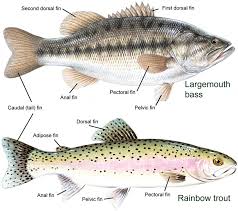Aquatic environments include freshwater, brackish water, and marine systems, each existing in various forms. Freshwater habitats may include static or standing bodies such as lakes and ponds (lentic habitats), while rivers, marine water, or oceans are moving or running (lotic habitats).
The study of freshwater ecosystems is known as limnology. Due to the unique environmental conditions posed by different water bodies and climatic regions, fish have evolved distinct combinations of adaptive features for survival. These adaptations include responses to arid conditions, variable water levels, fire, and high salinity.
Aquatic Habitat and Its Inhabitants
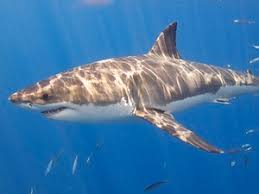
Aquatic life, in this context, refers to organisms that permanently or periodically inhabit areas associated with permanent or ephemeral freshwater or naturally saline systems, including riparian zones. Such areas encompass rivers, streams, creeks, lakes (permanent or ephemeral), swamps, and floodplains.
These organisms include crustaceans, fish, turtles, and aquatic flora. Open ocean or pelagic organisms inhabit four major bio-zones: the epipelagic, mesopelagic, bathypelagic, and abyssopelagic zones. These zones are defined by depth and environmental conditions:
i. The epipelagic zone (0-100 meters) allows sufficient light penetration for photosynthesis.
ii. The mesopelagic zone extends from approximately 200 meters to 1000 meters.
iii. The bathypelagic zone ranges from 1000 meters to 3000 meters.
iv. The abyssopelagic zone extends from 3000 meters to the ocean floor.
The physical environment of these zones varies in light availability, oxygen levels, food resources, pressure, and temperature. These factors contribute to the diversity of organisms, with some species restricted to a single zone and others inhabiting multiple zones.
Marine organisms have adapted to survive by securing food, avoiding predation, and reproducing successfully. Adaptive features include size, coloration, defensive and reproductive strategies, bioluminescence, and specialized teeth and jaws.
Larger organisms tend to inhabit upper zones due to greater food availability, while deep-water organisms are often smaller. However, certain limiting factors affect their existence in aquatic environments.
Read Also: How to Grow Paw-Paw (papayas): Beginners Business Guide
Important Limiting Factors in Aquatic Habitats
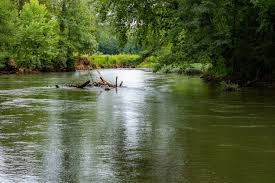
1. Temperature: Seasonal changes in temperature in ponds and lakes create patterns of water circulation and stratification. Since aquatic organisms, including fish, have narrow temperature tolerances, temperature greatly influences their activities.
2. Dissolved Oxygen: The total amount of oxygen dissolved in water is crucial for aquatic animals, as fish rely on dissolved oxygen rather than atmospheric oxygen. Dissolved oxygen levels are highest near the surface and decrease with depth.
3. Salinity: Salt concentrations vary significantly between freshwater, brackish, and marine environments. This distinction categorizes fish species into freshwater, marine, or brackish water species, addressing osmoregulation challenges.
4. Light: Light penetration is affected by suspended solids, influencing water turbidity. Light is essential for the photosynthetic activities of aquatic plants.
5. Currents: Surface waves caused by wind pressure affect shorelines and shore organisms. Currents also influence the distribution of nutrients and small aquatic organisms.
Classes of Aquatic Organisms
Freshwater organisms can be classified as follows:
1. Benthos: Bottom-dwelling organisms, such as flatworms and rhizopods.
2. Periphyton: Organisms that attach to plants or surfaces, such as algae and diatoms.
3. Plankton: Floating organisms whose movement depends on currents, such as diatoms and desmids.
4. Nekton: Swimming organisms, such as fish and amphibians.
5. Neuston: Organisms that rest or swim on the water surface, such as insects.
Adaptation of Fish to Aquatic Environments
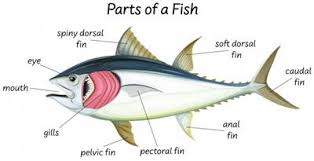
Adaptation is a natural phenomenon applicable to all living organisms, including fish. It refers to the ability of organisms to utilize available resources, develop, reproduce, and participate in ecological processes that sustain ecosystems.
Fish can survive in new environments if ecological conditions resemble their original habitat. Over time, they may develop structures compatible with the new environment, though some may fail, explaining why certain species are restricted to specific water bodies.
Most adaptive features in fish are inheritable and passed through generations. These features are categorized into structural, physiological, and behavioral adaptations.
1. Structural Features: Structural adaptations are the most observable. These include fins (dorsal, pectoral, pelvic, and caudal), spines or bony structures, and the presence or absence of scales. Variations in mouth position and dentition reflect feeding habits. Some fish possess vomerine teeth, while others have granular or canine-like teeth.
The adipose fin, a modified dorsal fin, is another adaptive feature. Fish generally have streamlined, egg-shaped bodies that taper posteriorly, reducing friction and facilitating movement.
2. Physiological Features: Physiological adaptations include the production of specific enzymes and activities related to feeding and digestion. For example, microphagous feeders have fine, numerous gill rakers, while macrophagous feeders possess few, strong gill rakers.
3. Behavioral Features: Behavioral adaptations differ from physiological traits in that they are consistently displayed. For instance, the rapid movement of the opercular plate during gas exchange varies between freshwater and marine fish.
Migratory patterns of some fish and shellfish between freshwater and marine habitats help manage salt levels during their life cycle. Certain species, like tilapia, are prolific breeders, while others, such as mouth brooders, protect their young from predators.
Read Also: How To Grow Apple Trees
Adaptation of Plants to Aquatic Life
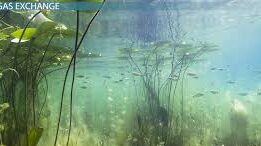
Living in aquatic environments presents tradeoffs for plants. While they are protected from drought and extreme temperature fluctuations and benefit from abundant nutrients, they face challenges such as limited light, scarce oxygen at night, and modified reproductive strategies. Despite these disadvantages, aquatic plants are highly adapted to their habitat.
Photosynthesis in Aquatic Plants
Sunlight availability is often limited for submerged plants, especially in plankton-rich marshes. Many submerged plants have extra chloroplasts in their outer cell layers. In contrast, terrestrial plants protect their chloroplasts with a cuticle to shield them from strong sunlight.
Gas Exchange and Support in Aquatic Plants
Aquatic plants commonly possess air passages and specialized leaf structures. Emergent plants transport oxygen from stems and leaves to waterlogged roots, providing structural support. Floating-leaf plants, such as water lilies, have air chambers for buoyancy. Submerged plants use air passages for oxygen storage and gas exchange through thin, partitioned leaves.
Reproduction and Winter Survival in Aquatic Plants
Aquatic plants employ various reproductive strategies, including vegetative reproduction. Some plants, like wild celery, produce male and female flowers for pollination. Cattails rely on wind for pollination and water for seed dispersal. Many plants, such as cattails, pondweed, and water lilies, use rhizomes for reproduction and food storage. Duckweed survives winter by producing starch-rich fronds that sink and resurface in spring.
Freshwater Zonation
Freshwater plants grow in distinct zones based on depth. Emergent plants, such as cattails and bulrushes, grow in shallow water. Floating-leaf plants, like water lilies, survive in deeper water. Submerged plants, such as widgeon grass, grow entirely underwater. Free-floating plants, like duckweed, are unrestricted by depth. These zones reflect the adaptation of plants to varying light and depth conditions.
Succession in Aquatic Ecosystems
Succession involves the replacement of one community by another over time. In ponds and marshes, organisms die and settle at the bottom, gradually filling the water body and making it shallower. This process allows new species to colonize the area. Emergent vegetation marks the transition from pond to marsh, eventually leading to dry land dominated by grasses, woody species, and hardwoods.
Evolution and the Study of Fish (Ichthyology)
The early fossil record of fish is unclear, but fish eventually became a dominant form of sea life, branching into land vertebrates such as amphibians, reptiles, and mammals. The development of hinged jaws played a significant role in the proliferation of fish. Early fish may have evolved from creatures similar to sea squirts, with some retaining larval forms into adulthood.
History of the Study of Fish
The study of fish dates back to the Upper Paleolithic Revolution. Ichthyology developed through several epochs, each contributing significant advancements. Early cultures studied fish for practical purposes, while later scholars like Aristotle and Pliny the Elder made formal scientific contributions.
The European Renaissance marked the beginning of modern ichthyology, with scholars like Rondelet and Linnaeus refining taxonomic systems. The exploration and colonization era expanded knowledge of fish diversity, culminating in the modern era with comprehensive works like Cuvier’s Histoire Naturelle des Poissons.
Do you have any questions, suggestions, or contributions? If so, please feel free to use the comment box below to share your thoughts. We also encourage you to kindly share this information with others who might benefit from it. Since we can’t reach everyone at once, we truly appreciate your help in spreading the word. Thank you so much for your support and for sharing!
Read Also: Advantages of Waste Recycling

